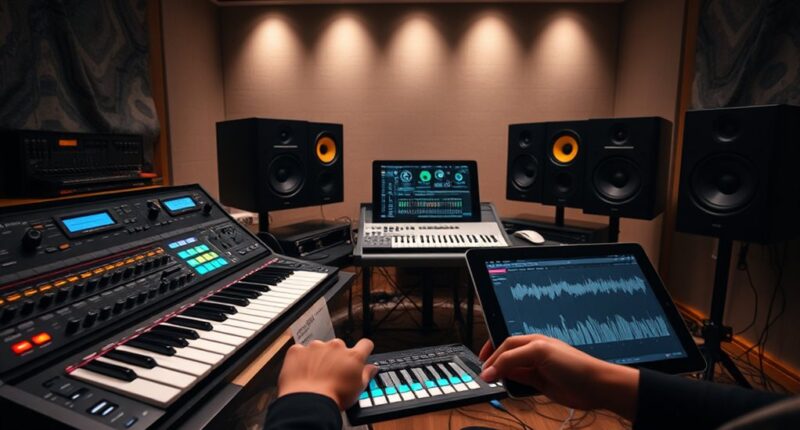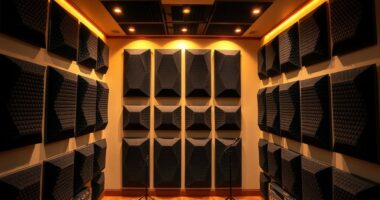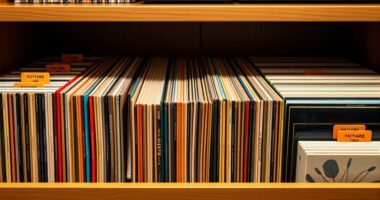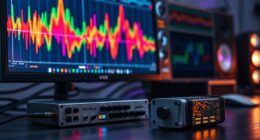If you’re looking for the best producing, sound design, and gear options for 2025, I can help. I recommend a mix of practical guides like MIXERMAN’s detailed course and “Producing Great Sound for Film and Video,” along with essential sound design resources like “Sound Design for Film” and “The Sound Effects Bible.” Durable, professional gear with future-proof features is also key. Stick around, and you’ll discover the top picks that can elevate your projects this year.
Key Takeaways
- Prioritize equipment with high sound fidelity and reliable performance suitable for professional music production and sound design.
- Consider budget, long-term durability, and compatibility with existing studio or setup requirements.
- Opt for versatile gear that supports multiple workflows, from recording and mixing to sound design and synthesis.
- Highlight top brands and models recommended by industry professionals for 2025.
- Include innovative tools, plugins, and hardware that enhance creativity and streamline production processes.
MIXERMANs Ultimate Guide to Producing Music and Songs
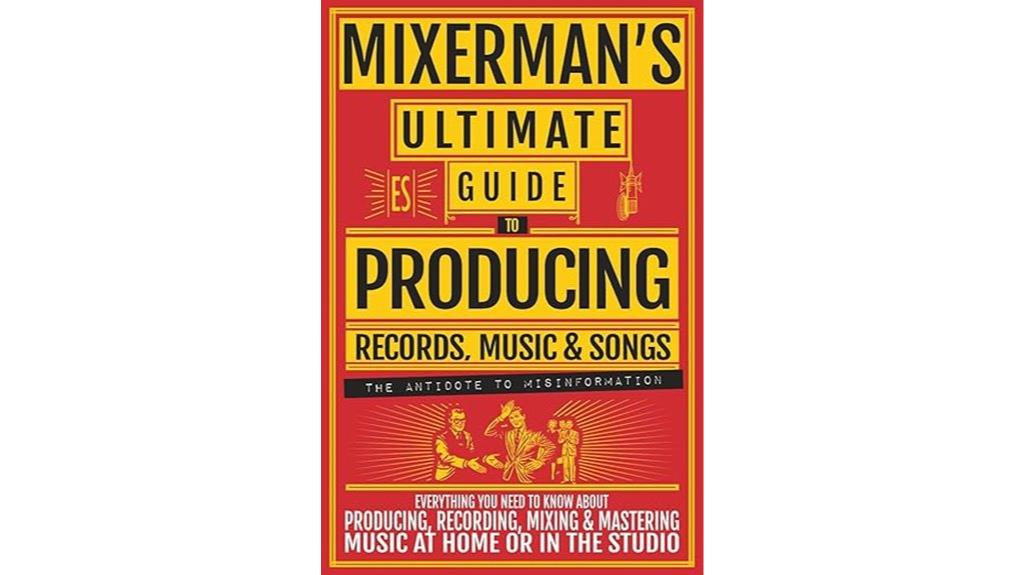
If you’re serious about taking your music production skills to the next level, MIXERMAN’s Ultimate Guide is a must-have resource, especially for home studio musicians and aspiring producers. As an award-winning producer and mixer, Mixerman brings real-world experience and authority to this exhaustive book. It covers every aspect of music creation, from recording to mastering, making complex concepts accessible. The guide explores collaboration, group psychology, and how all elements fit together, offering fresh perspectives. It’s an engaging, straightforward read praised for its clarity, practicality, and entertainment value, making it an essential addition to any producer’s library.
Best For: home studio musicians, aspiring producers, and anyone looking to deepen their understanding of music production from recording to mastering.
Pros:
- Comprehensive coverage of all aspects of music creation, from recording to mastering
- Clear, practical guidance that makes complex concepts accessible
- Engaging and entertaining writing style that appeals to both beginners and experienced professionals
Cons:
- Might be overwhelming for complete beginners without prior basic knowledge
- Focused heavily on practical applications, potentially lacking in highly technical or advanced topics
- Some readers may find the extensive detail time-consuming if seeking quick tips
Producing Great Sound for Film and Video
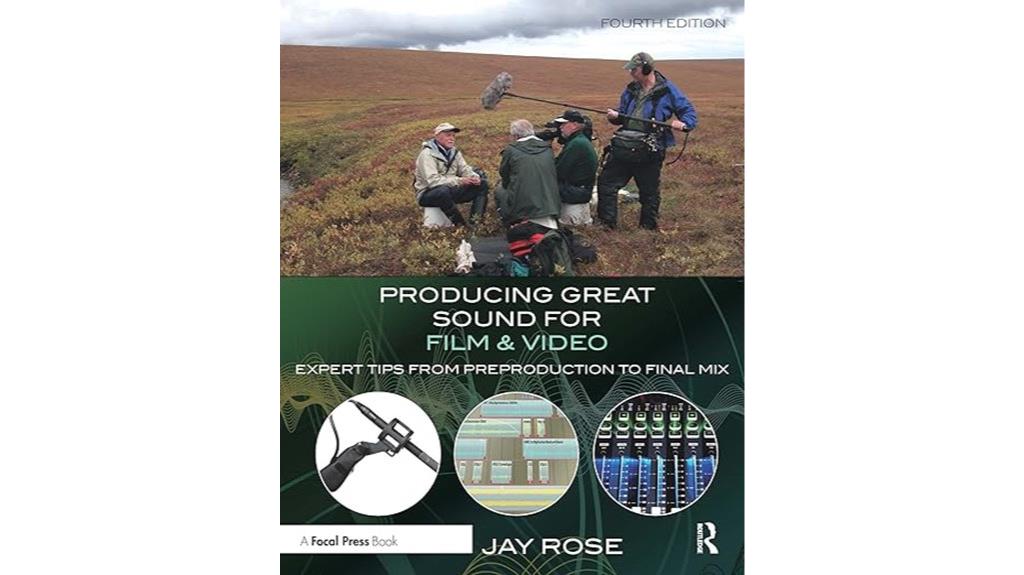
Are you a filmmaker or sound professional aiming to elevate your audio quality? “Producing Great Sound for Film and Video” stands out as an essential resource in 2025, offering clear, practical guidance rooted in decades of industry experience. The book blends technical principles with real-world tips, making complex ideas accessible and manageable. Though some resources are no longer available online, its core content remains invaluable. Many readers see it as a “private tutor,” guiding them through sound challenges with engaging explanations and practical advice. If you’re serious about improving your film audio, this book is a must-have reference that will continually enhance your understanding and skills.
Best For: filmmakers, sound professionals, and students seeking a comprehensive, practical guide to improve film and video audio quality.
Pros:
- Extensive, clear explanations blending technical concepts with practical application.
- Recognized as a valuable “private tutor” that enhances audio knowledge and skills.
- Updated editions reflect ongoing improvements, making it a reliable resource.
Cons:
- Some referenced audio files and online resources are no longer accessible, limiting follow-along exercises.
- Physical copies may arrive in less-than-ideal condition, such as dirt or bent corners.
- The book’s technical depth may require careful reading and repeated consultation for full comprehension.
Sound Design for the Stage (Crowood Theatre Companions)
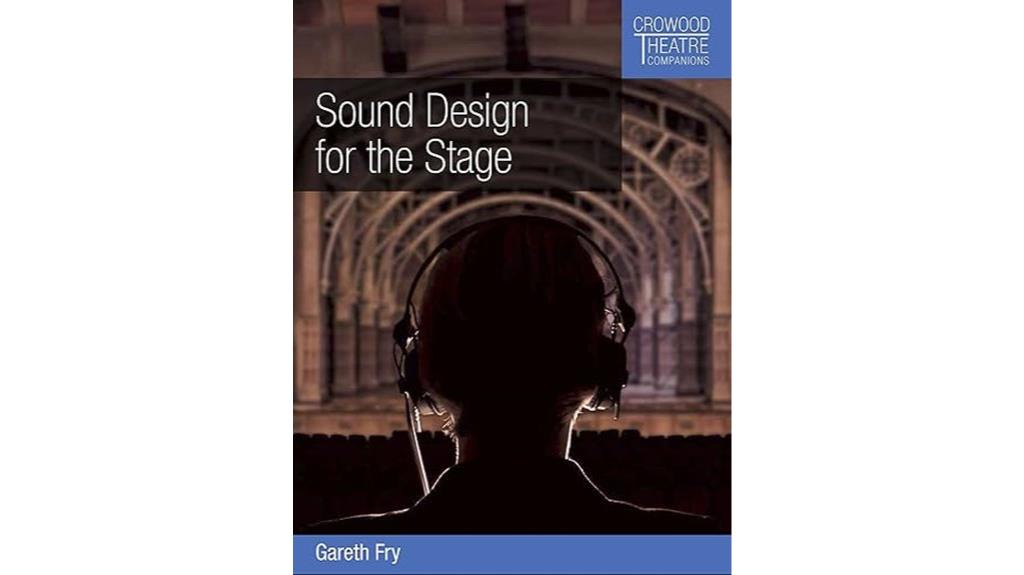
Sound Design for the Stage (Crowood Theatre Companions) stands out as an essential resource for aspiring and practicing theatre sound designers seeking practical guidance. It offers clear, accessible advice on everyday tasks, covering key skills needed to confidently work in modern theatre. Authored by Gareth Fry, a recognized expert on the AQA Level A list, the book combines credibility with practical insights. It thoroughly explores essential topics, making it useful for learners and professionals alike. Paired with sound system guides, it provides a exhaustive foundation. Overall, this book is highly valued for its clarity, practicality, and versatility in developing stage sound design expertise.
Best For: aspiring and practicing theatre sound designers seeking practical, accessible guidance to develop their skills and confidently work in modern theatre environments.
Pros:
- Clear and accessible language simplifies complex sound design concepts
- Comprehensive coverage of essential skills and practical advice
- Authored by Gareth Fry, a recognized expert, adding credibility and authority
Cons:
- May require pairing with additional technical guides for in-depth sound system design
- Focuses primarily on practical tasks, potentially lacking advanced theoretical insights
- Some readers might find it less detailed for highly specialized or complex sound design projects
Studying Sound: A Theory and Practice of Sound Design
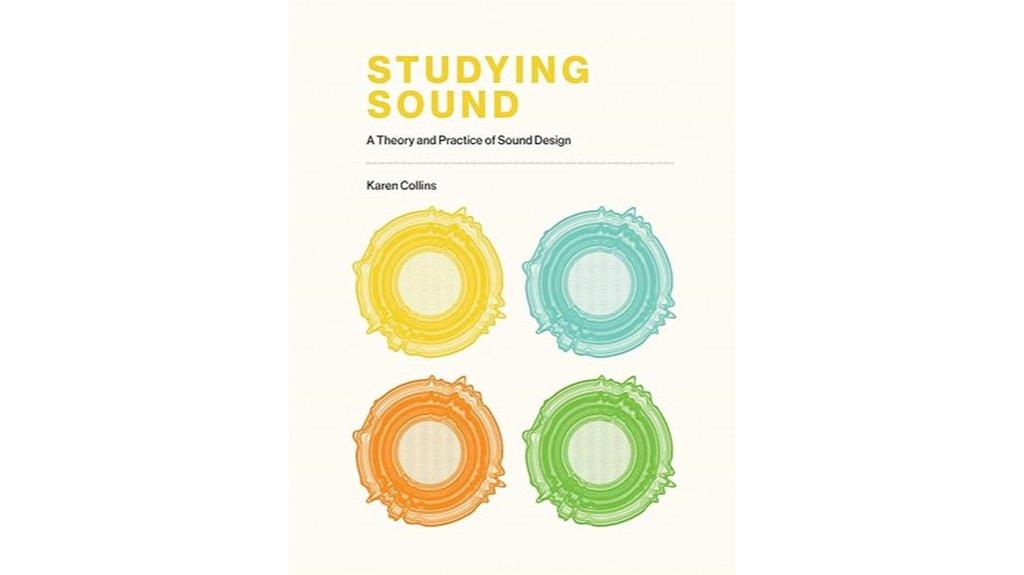
For beginners enthusiastic to explore the fundamentals of sound design, “Studying Sound: A Theory and Practice of Sound Design” offers an accessible starting point. It provides a broad overview of sound concepts without diving too deep into technical details, making it ideal for newcomers. The book encourages creative thinking and diverse approaches, though it tends to repeat ideas and cover topics broadly rather than exhaustively. While it might feel superficial for seasoned professionals, it’s a valuable resource for those just starting out, providing a solid foundation and inspiring curiosity. Overall, I recommend it as an introductory guide for anyone eager to learn sound design basics.
Best For: beginners eager to learn the fundamentals of sound design and explore creative approaches without delving into technical complexities.
Pros:
- Provides a broad, accessible overview suitable for newcomers
- Encourages creative thinking and diverse sound approaches
- Professionally written and well-structured, making it easy to follow
Cons:
- Lacks depth in specific sound design topics, limiting detailed understanding
- Tends to repeat concepts and circle around ideas, which may affect readability
- Less useful for experienced practitioners seeking advanced knowledge
Sound Design for Film
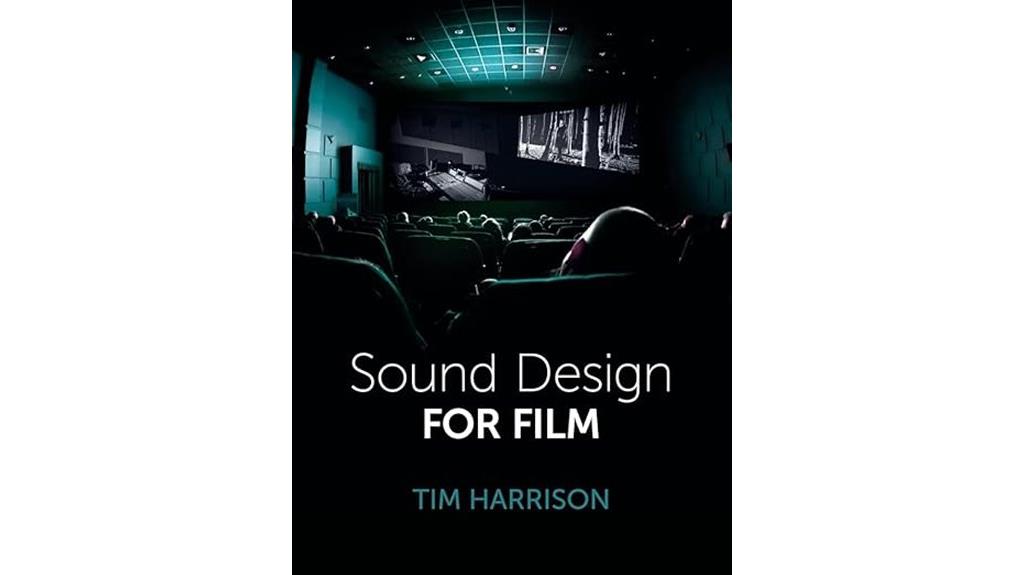
If you’re a filmmaker or aspiring sound designer aiming to craft immersive cinematic experiences, understanding the core principles of sound design is essential. While I’m skilled at capturing realistic sounds, shaping those sounds to evoke specific emotions remains challenging. Techniques like Foley and ADR are vital tools; Foley creates sounds in separate environments, while ADR replaces dialogue to enhance clarity. The process of editing voice and shaping soundscapes is complex and often instinctive. Although visuals in the literature tend to be illustrative rather than instructional, I find that mastering these techniques is key to transforming raw recordings into compelling cinematic sound. It’s a creative skill that develops with practice and experimentation.
Best For: filmmakers, film students, and sound enthusiasts seeking to deepen their understanding of cinematic sound design principles and techniques.
Pros:
- Provides a clear overview of fundamental sound design concepts and methods such as Foley and ADR.
- Well-written and inspiring, suitable for both beginners and experienced practitioners.
- Emphasizes the importance of intuition, experimentation, and context in sound creation.
Cons:
- Lacks extensive technical details or step-by-step instructions for practical application.
- Visual content is more illustrative than instructional, limiting hands-on guidance.
- Limited coverage of sound design practices specific to independent or documentary filmmaking contexts.
Principles of Game Audio and Sound Design

Beginners and aspiring game designers will find “Principles of Game Audio and Sound Design” an invaluable resource, thanks to its clear and well-structured explanations. It covers essential concepts in an accessible way, making complex ideas understandable for newcomers. The book’s logical flow helps readers grasp core principles of game audio, from sound creation to implementation. While the content is highly informative and well-written, some readers note frequent typos that can disrupt readability. Overall, I recommend this book for its usefulness and clarity, especially for those starting out in game sound design, and I look forward to future works by the author.
Best For: beginners and aspiring game designers seeking a clear, well-structured introduction to game audio and sound design.
Pros:
- Clearly explains complex concepts in an accessible way.
- Well-structured and logical flow that aids learning.
- Highly informative and valuable for understanding core principles of game audio.
Cons:
- Contains numerous typos that can disrupt readability.
- Some may find the depth insufficient for advanced topics.
- The physical condition may vary, though generally good.
Producing Great Sound for Film and Video
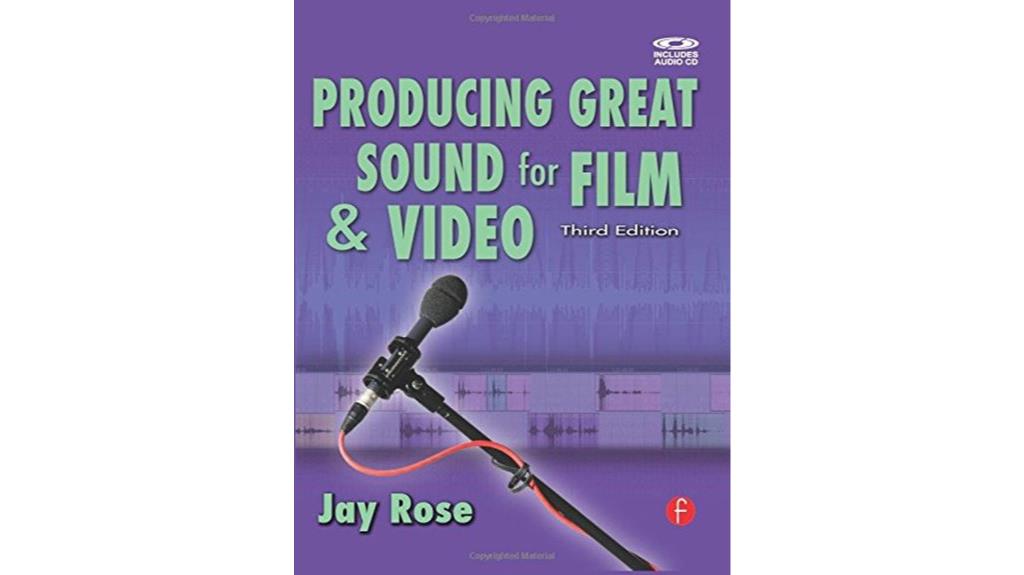
Anyone serious about elevating their film or video projects should prioritize producing great sound, as it often makes or breaks the final product. High-quality audio is vital, whether you’re on a tight budget or working professionally. Understanding sound physics, microphone choices, and proper recording techniques helps guarantee clear, impactful audio from the start. Investing in good equipment and environment setup prevents costly fixes later. Post-production is essential, but it can’t fix poor recordings. Mastering these fundamentals—capture, editing, and sound design—gives your projects a polished, professional edge that resonates with viewers and elevates your storytelling.
Best For: independent filmmakers, content creators, and audio enthusiasts seeking comprehensive guidance on producing professional-quality sound for film and video projects.
Pros:
- Provides thorough coverage of sound physics, equipment, and recording techniques for all skill levels.
- Emphasizes practical advice for capturing high-quality audio on a budget or with professional gear.
- Includes clear diagrams and accessible explanations that make complex concepts easy to understand.
Cons:
- Focuses more on foundational concepts than detailed software tutorials or advanced editing techniques.
- Some readers may find the technical language challenging without prior audio knowledge.
- Equipment recommendations and cost considerations may become outdated as technology evolves.
The Sound Effects Bible
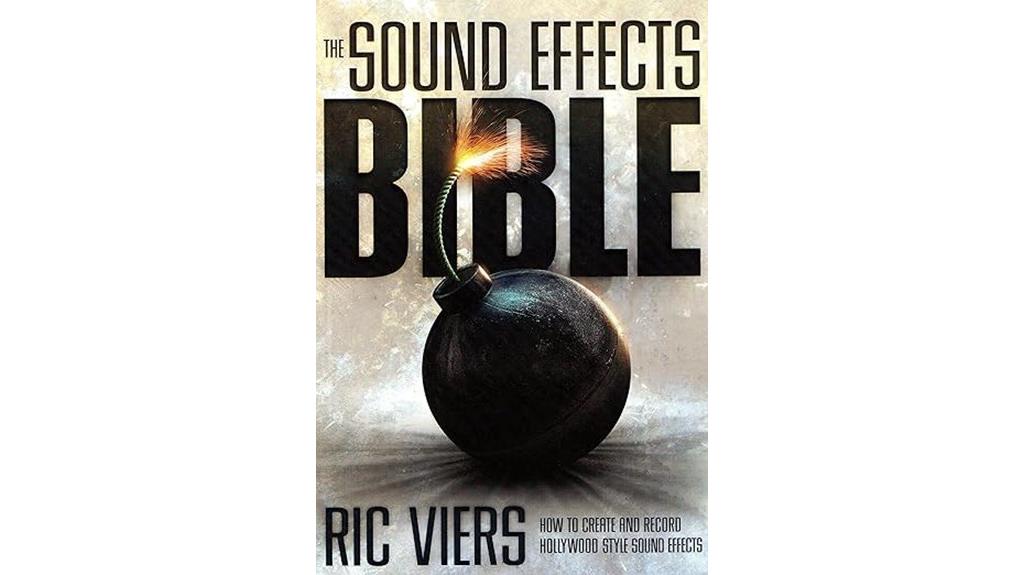
Looking to deepen your understanding of sound design and recording techniques? The Sound Effects Bible is an invaluable resource that covers everything from the science of sound to practical Foley art. It offers step-by-step guidance on creating a wide range of sound effects, with tips tailored for beginners and intermediate engineers. The book discusses microphone choices, recording setups, and editing techniques, helping you avoid common pitfalls. While some production quality issues exist, the content’s depth, humor, and real-world advice make it a must-have for hobbyists and pros alike. It’s an inspiring, accessible guide to mastering sound effects and expanding your creative toolkit.
Best For: hobbyists, students, and professional sound engineers seeking a comprehensive, practical guide to sound effects and recording techniques.
Pros:
- Offers detailed, step-by-step procedures for creating a wide variety of sound effects.
- Provides practical advice suitable for beginners and intermediate users, with clear explanations.
- Combines technical accuracy with humor and engaging anecdotes, making complex concepts accessible.
Cons:
- Production quality issues, such as poorly reproduced images and layout misalignments, detract from presentation.
- Some technical details may be outdated or lack depth for advanced users.
- The extensive length and emphasis on certain sections might be considered excessive or self-promotional.
Synthesizer Cookbook: How to Use Filters (Sound Design for Beginners Book 2)

If you’re just starting out in sound design and want a clear, straightforward introduction to synthesizer filters, “Synthesizer Cookbook: How to Use Filters” is an ideal choice. This book focuses on explaining basic filter concepts without overwhelming you with complex techniques. It helps beginners understand what filters do in sound synthesis, emphasizing foundational knowledge rather than detailed sound design recipes. While it’s simple and educational, it’s best suited for those new to synthesis rather than experienced users. Think of it as a stepping stone to grasp essential filter functions before exploring more advanced techniques later on.
Best For: beginners seeking a straightforward, foundational understanding of synthesizer filters without advanced or complex techniques.
Pros:
- Provides clear, simple explanations suitable for absolute beginners
- Focuses on fundamental concepts, building a solid foundational knowledge
- Educational and easy to understand, making complex topics accessible
Cons:
- Lacks advanced insights or techniques for experienced sound designers
- Does not include specific sound design recipes or project instructions
- Considered too basic and generic for professional or in-depth use
Factors to Consider When Choosing Producing, Sound Design & Gear (61 – 160)
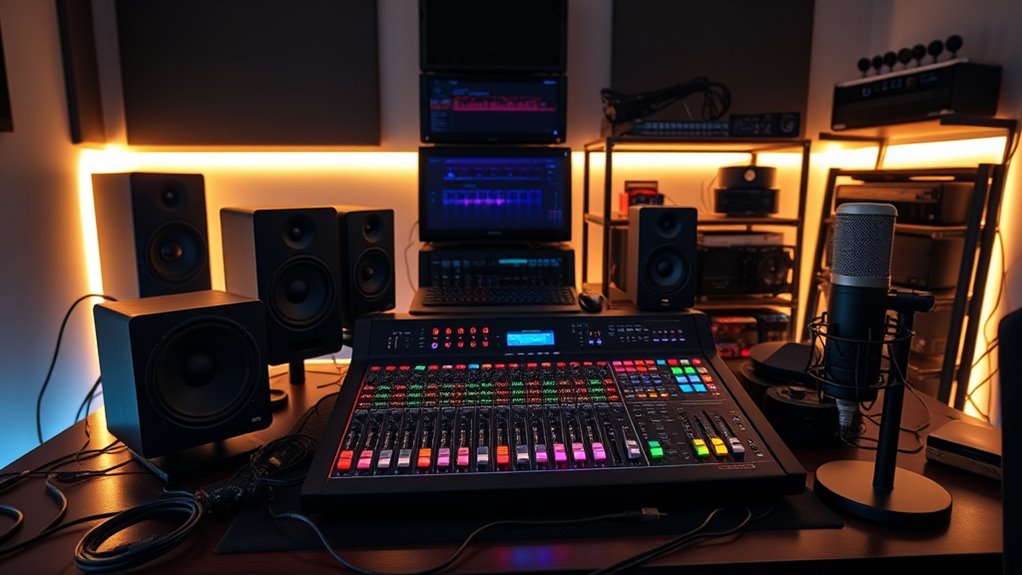
When selecting gear for producing and sound design, I always consider my budget and whether the options are affordable without sacrificing quality. I also evaluate technical compatibility to guarantee everything integrates smoothly with my setup and focus on sound quality to meet my creative goals. Finally, I prioritize ease of use, durability, and build to make sure my gear stays reliable through long sessions.
Budget and Affordability
Choosing the right gear starts with setting a realistic budget that aligns with your current needs and goals. This helps you determine what quality and features you can afford, directly impacting your sound and production capabilities. Higher-priced gear often offers better durability, advanced features, and superior sound clarity, but it’s not always necessary for beginners or hobbyists. Striking a balance between affordability and essential features ensures you invest wisely without overspending on unnecessary functions. It’s also important to consider long-term costs like maintenance, upgrades, and replacements. Prioritizing budget-friendly, reliable gear allows you to build a functional setup while saving funds for other vital elements like acoustics, software, or training. This strategic approach keeps your investments sustainable and aligned with your growth as a creator.
Technical Compatibility Needs
Selecting gear within your budget is just the starting point; verifying that your equipment works smoothly together is equally important. First, check that your audio interface and computer support the sample rates and bit depths your projects require. Compatibility between your DAW, sound card, plugins, and hardware controllers is essential to avoid workflow disruptions. Make sure your microphones and outboard gear connect seamlessly using your existing connectors like XLR, TRS, USB, or Thunderbolt. Additionally, verify that your studio monitors or headphones can handle the frequency response and impedance levels of your setup. Don’t forget to take into account power supply and voltage compatibility, especially if you’re working across different regions, to prevent damage or performance issues. Compatibility ensures reliability and smooth operation during your creative process.
Sound Quality Expectations
Achieving high sound quality in your productions hinges on more than just the gear you choose; it requires careful attention to recording techniques, equipment calibration, and acoustics. Clear, balanced sound depends on accurately capturing audio and minimizing noise or distortion. Professional sound design aims for clarity, even frequency response, and an immersive experience, often exceeding casual expectations. The quality of recordings and mixes greatly influences perceived sound quality, sometimes more than the equipment itself. Expectations vary by medium—film and broadcast demand higher fidelity than hobbyist projects. To meet these standards, consistent monitoring on reference speakers and in controlled environments is essential. By focusing on these factors, you can ensure your final product aligns with professional sound quality expectations, no matter your project scope.
Ease of Use Factors
When evaluating production, sound design, and gear, ease of use plays a essential role in ensuring a smooth workflow. A user-friendly interface with intuitive controls helps minimize the learning curve, especially for beginners. Features like preset recall and simplified workflows make creative processes more efficient, saving time and reducing frustration. Clear labeling and ergonomic design contribute to smoother operation, allowing me to focus on creativity rather than technical issues. Additionally, accessible troubleshooting options help address problems quickly without disrupting my work. Compatibility with existing systems and software is also indispensable, as it streamlines integration and reduces setup complexity. Overall, gear that’s easy to navigate enhances productivity and makes the entire creative process more enjoyable.
Durability and Build
Durability and build quality are vital factors when choosing gear for producing and sound design, especially since these tools often endure heavy use and transportation. High-quality materials like metal or reinforced plastics ensure that equipment can withstand daily wear and tear. The construction, including sturdy chassis and secure connectors, directly impacts longevity and resistance to physical damage. Well-built tools have robust internal components that resist wear over time, maintaining consistent performance. To gauge durability, I rely on user reviews highlighting long-term reliability and reports of failures after extended use. Investing in rugged, professionally rated gear minimizes repairs and replacements, which is essential for demanding environments. Ultimately, durable gear provides peace of mind and ensures your creative work stays uninterrupted.
Future Expansion Potential
Considering future expansion potential is essential when selecting gear for producing and sound design, as technology continuously evolves. I look for systems that support updates and upgrades to prevent obsolescence, ensuring my investment remains relevant. Compatibility with new technologies and formats is vital for long-term usability, so I prioritize hardware and software with open architecture or modular design, making expansion straightforward. I also evaluate if the gear can integrate with additional modules or tools, allowing me to scale up as my projects grow in complexity. Scalability options matter too—whether I can handle larger workloads or more intricate productions without needing a complete overhaul. Ultimately, choosing gear with solid future expansion potential helps me stay agile and adaptable in a fast-changing industry.
Frequently Asked Questions
What Emerging Trends Will Influence Sound Gear Choices in 2025?
Emerging trends like AI integration, wireless connectivity, and portable, modular gear will shape my sound choices in 2025. I’ll prioritize devices that adapt seamlessly to evolving workflows, offer real-time customization, and enhance mobility. As technology advances, I expect smarter, more intuitive gear to streamline production, allowing me to focus more on creativity. Staying ahead means embracing these innovations to craft richer, more dynamic sound experiences effortlessly.
How Do I Balance Sound Quality With Portability for Mobile Production?
Balancing sound quality with portability is like walking a tightrope, but I find focusing on versatile, compact gear helps. I choose high-quality, lightweight microphones and portable audio interfaces that deliver great sound without bulk. Using wireless options and multi-purpose accessories also keeps my setup lean. Prioritizing essential gear guarantees I capture professional sound on the go, making my mobile productions seamless and effective without sacrificing quality.
What Are the Best Budget-Friendly Options for Professional Sound Design Gear?
If you’re looking for budget-friendly professional sound design gear, I recommend starting with the Audio-Technica AT2035 microphone for clear recordings, paired with the Focusrite Scarlett 2i2 interface for reliable connectivity. Add a pair of Yamaha HS5 monitors for accurate sound reproduction. These options provide quality without breaking the bank, making them perfect for creators who want professional results on a budget.
How Can I Customize Sound Design Workflows for Different Media Formats?
To customize sound design workflows for different media formats, I suggest starting with adaptable templates and presets that suit each project’s needs. I tweak parameters and organize tracks specific to the format—whether it’s film, gaming, or podcasts—so everything flows smoothly. Embracing flexibility allows me to meet diverse demands efficiently, ensuring my sound aligns perfectly with each medium’s unique storytelling style and technical requirements.
What Criteria Should I Prioritize When Upgrading Existing Sound Equipment?
When upgrading my sound equipment, I prioritize audio quality, durability, and versatility. I look for gear that offers clear, accurate sound reproduction to enhance my projects. Reliability is key, so I choose durable equipment that can withstand regular use. I also value versatility, opting for gear that adapts to different media formats and production needs. Finally, I consider compatibility with my existing setup to guarantee seamless integration.
Conclusion
In the world of sound, these top picks aren’t just tools—they’re the secret weapons that can transform your entire creative universe. Whether you’re producing music, designing film sound, or crafting immersive audio experiences, the right gear and techniques can elevate you to legendary status. Plunge into, experiment, and remember: with the right sound, you’re not just creating; you’re shaping the very fabric of reality. Your masterpiece awaits—go make history.
